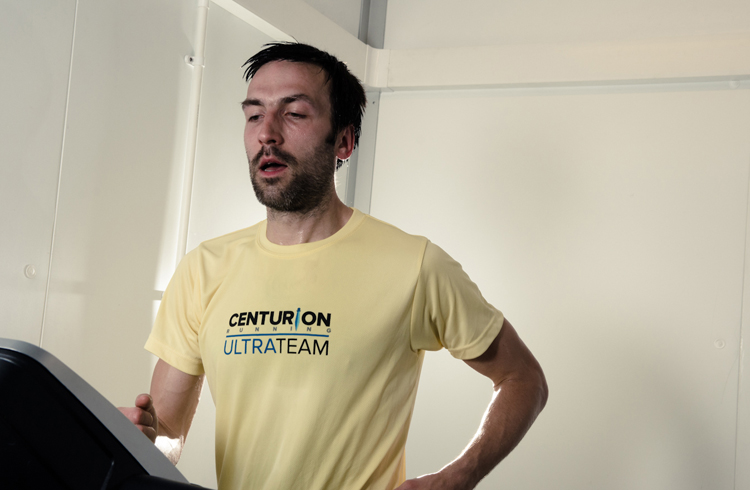What does it take to be successful in this kind of race?
It depends upon how you define success. To just finish, the most important thing is having a strong mind. To be competitive and finish towards the front of the field, you have to be a good all-rounder due to the many different challenges of the event. On four of the five stages, the distance is a marathon or slightly less, so being quick over a marathon helps (my PB is 2hrs 37mins). The long stage is anywhere from 45-62 miles this year, so being a decent ultra-runner is also important as this stage trips up many fast marathon runners. Being strong enough to run with a 8kg minimum pack (including water and all compulsory items) is another requirement. Finally, a positive attitude and strong mind are needed to deal with the many lows that occur over a week in the desert and to keep you moving forward when the voices are telling you it’s time to quit.
Living and working in southeast England isn’t, presumably, the best preparation for racing in the Sahara Desert. How do you prepare yourself for the scorching heat you’ll encounter?
Training through a British winter for a race in the Saharan spring isn’t ideal, you’re right. But there are ways to prepare for the heat. I used the heat chamber in the Kingston University where I can achieve most of necessary acclimation in around 10 hours of training over the final three weeks build-up to reduce the advantage that the Moroccan runners have.
The MdS is often called “the toughest footrace on Earth”. What do you think is the most challenging aspect of the event?
For me, it’s the back-to-back nature of the race. It’s tough, both mentally and physically, to race hard five times in six days with nothing but three bottles of lukewarm water, meagre rations of cold food, a stoney floor for a bed and a cold night with seven snoring tent-mates waiting as a reward!
You work as an accountant by day. How do you manage to fit in running around work and family commitments?
It is a big challenge juggling family (I have two kids, aged two and three), work and training so I have to be organised and plan ahead. During the week, I usually run twice a day (in the morning and at lunch) and then sometimes cycle on an indoor trainer after the kids have gone to bed in the evening. At the weekend, I find the best compromise for me is to do most of my training in my local park. This means I sometimes do 10-15 loops of the perimeter of Greenwich Park, which can become a bit tedious! Having an understanding wife is key, and I couldn’t do it without her support.
MdS insists that you carry all your own kit and supplies. Talk us through your checklist.
The checklist is pretty long! Alongside food and drink, the list of compulsory items includes a backpack, sleeping bag, compass, knife, lighter, signalling mirror and whistle. Then there are some more unusual items such as a flare, poo bags, topical disinfectant and an anti-venom pump for snakebites!
Have you always been in shape or did you come to running later in life?
I was actually fairly unfit until my mid-20s when, as a non-runner, I decided to run a marathon for a “challenge” as a box-ticking exercise. I found that I enjoyed it and, after about three years, I got my marathon time below 2hrs 45mins and moved on to ultra-running. I didn’t train very hard or smart for it – I basically dropped all the speedwork – and my results were fairly average until about three years ago, when I started to dedicate a lot more time and energy to running and my results improved.
If you had one piece of advice for someone thinking of signing up to the MdS, what would it be?
The MdS is a great event and lots of people go back more than once. It isn’t cheap but it’s more than just a race; it’s an adventure and you’ll have some real highs and lows in an amazing environment. But ideally you should build up to it; do a few trail marathons first, then do a 50-miler and maybe a couple of short multi-days as this will prepare you for the MdS much better and will make the experience far more enjoyable.







